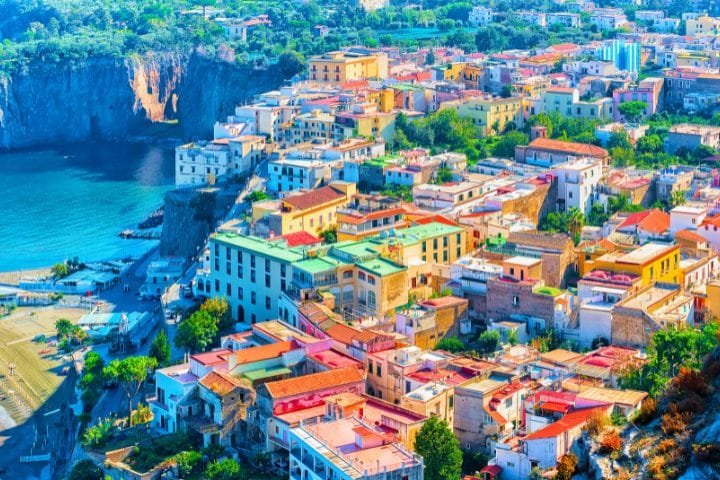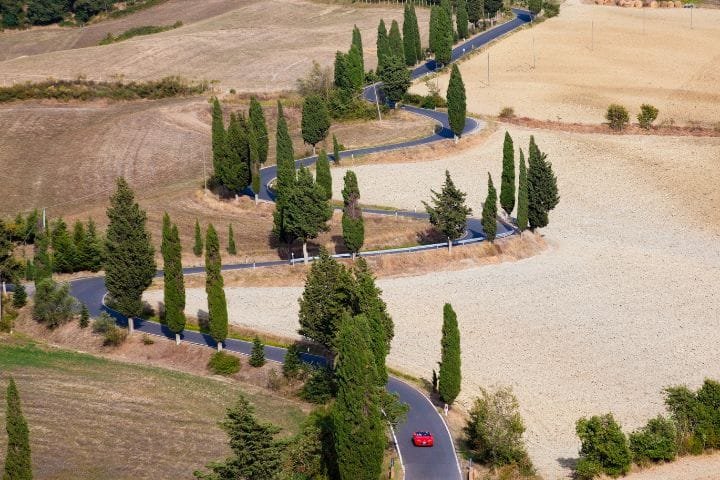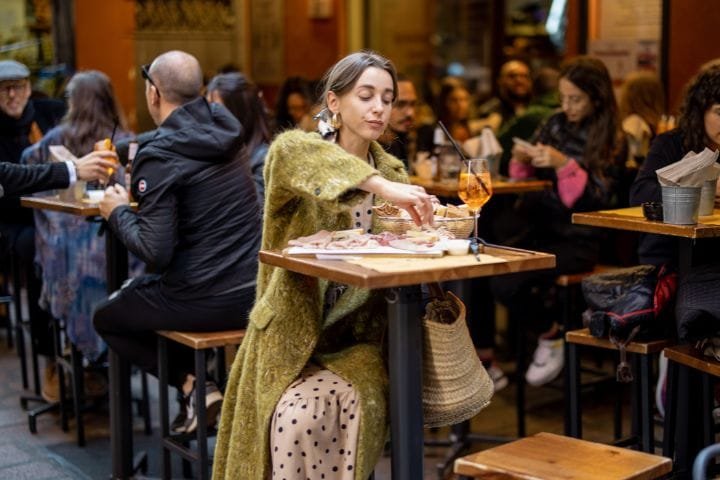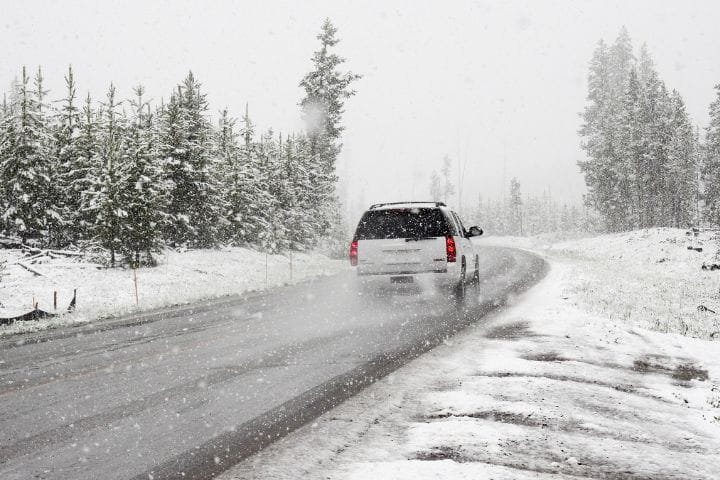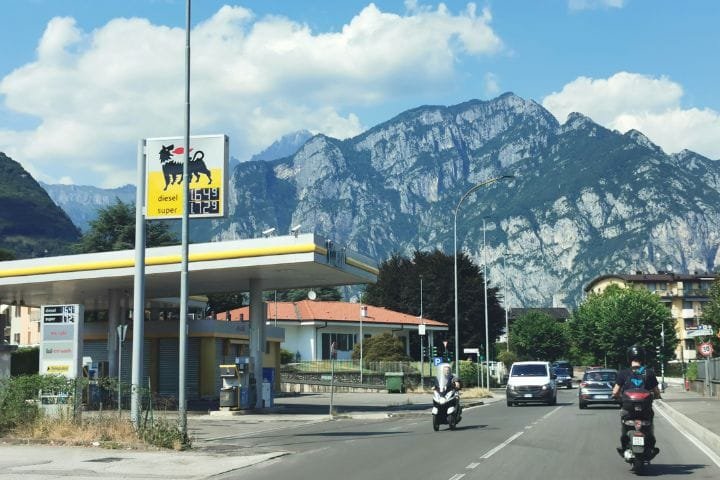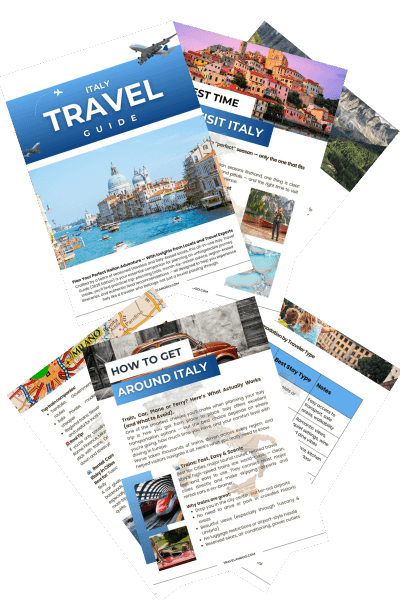Winter Olympics Italy 2026 Travel Guide: Plan Your Trip by Car to Milan & Cortina

by Abu | Last Updated December 17, 2025
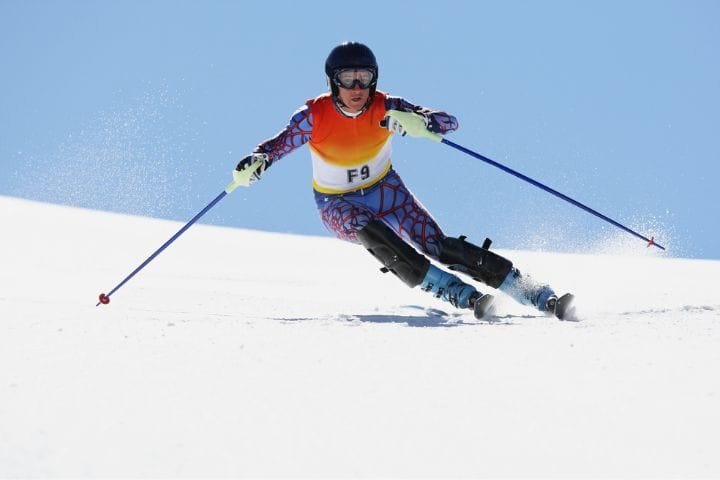
The 2026 Winter Olympics in Milan and Cortina d’Ampezzo offer a unique opportunity to experience world-class Olympic competition while driving through some of Europe’s most spectacular Alpine landscapes, combining the excitement of Olympic events with the freedom to explore northern Italy’s cultural treasures and breathtaking mountain scenery.
Having lived in Italy for 20 years and extensively explored every corner of the northern regions by car – from routine Milan business trips to countless Dolomites adventures – I understand both the incredible opportunities and significant challenges that driving to the 2026 Olympics will present for international visitors.
My decades of navigating Italian traffic patterns, understanding regional infrastructure limitations, and experiencing how major events transform normally manageable routes into logistical nightmares have taught me that successful Olympic travel by car requires strategic planning that goes far beyond securing event tickets.
The Milan-Cortina Olympics present unique geographical challenges: Milan offers excellent highway access but complex urban driving, while Cortina provides stunning Alpine settings with limited mountain roads that will face exceptional demand during competition periods.
Whether you’re planning to attend specific events or combining Olympic experiences with broader Italian adventures, understanding the driving logistics, parking strategies, and accommodation realities will determine whether your 2026 Olympic experience becomes a seamless celebration or a traffic-dominated ordeal.
🚗 Planning a Winter Olympics Road Trip in Italy
Driving gives you flexibility between Milan, Cortina, and alpine venues — but preparation is key.
- Start with Italy’s complete driving rules & winter considerations → The Ultimate Guide to Driving in Italy
- Understand winter-specific driving requirements → Winter Driving in Italy: Complete Guide
Overview of 2026 Milan-Cortina Olympic Venues and Locations

Milan venues will host ice hockey at PalaItalia, figure skating and short track at the Mediolanum Forum, plus the Olympic ceremonies at San Siro Stadium. Having driven to countless events at these venues over the years, I can tell you that each presents distinct parking and access challenges that will be dramatically increased during Olympic competition.
Cortina d’Ampezzo serves as the Alpine heart of the Olympics, hosting downhill skiing, bobsled, luge, and curling in venues that showcase the Dolomites’ spectacular beauty. The town’s narrow mountain roads and limited parking create bottlenecks even during normal peak seasons – Olympic crowds will require unprecedented traffic management.
During the Cortina Audi FIS Ski World Cup 2019, I witnessed how even a fraction of Olympic-level crowds transformed this charming mountain town into a traffic nightmare, with 3-hour delays becoming routine and parking spaces commanding premium prices.
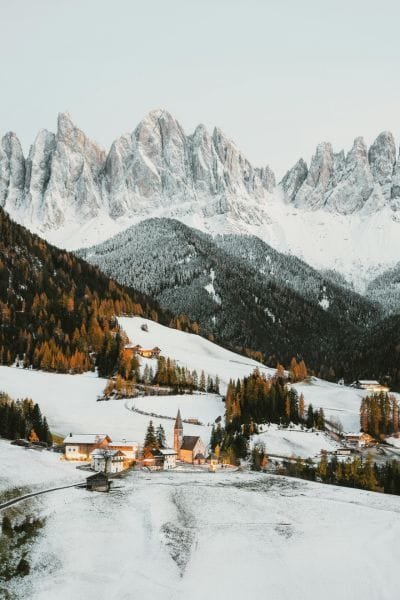
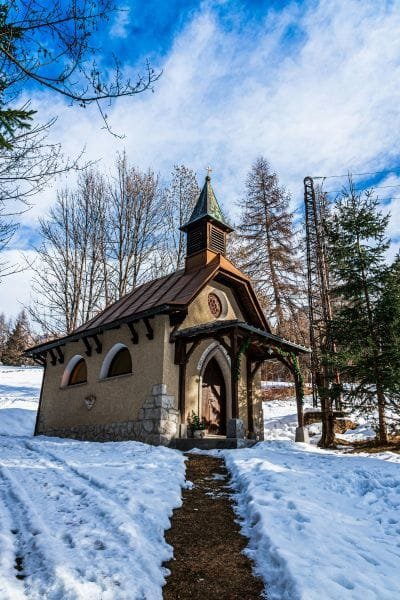
Valtellina region venues around Bormio and Livigno will host Nordic skiing events in spectacular Alpine valley settings. The single-access valley roads create natural blockages that become particularly challenging when weather affects mountain driving conditions in winter.
Val di Fiemme in Trentino will host ski jumping and Nordic combined events, requiring cross-regional travel that adds complexity to multi-event Olympic experiences. The drive from Cortina to Val di Fiemme typically takes approximately 2h 8m through mountain passes that can become risky in February conditions.
Geographic distribution challenges mean that attending events across all venue clusters requires strategic base selection and realistic travel time planning. The 400 kilometers (around 250 miles) distance between Milan and Cortina becomes significantly longer during Olympic traffic conditions and potential weather delays.
Venue cluster essentials:
- Milan: urban venues with complex city driving and ZTL restrictions
- Cortina: stunning Alpine settings with severely limited mountain access roads
- Valtellina: valley locations accessible via single-access mountain routes
- Val di Fiemme: additional mountain venues requiring cross-regional travel
- 150+ kilometer distances between major venue clusters affecting multi-event attendance
🏟️ Understanding Venue Geography
Events are spread across cities and alpine regions.
- Learn how regional driving conditions differ across Italy → Driving in Italy: Routes & Regional Differences
- Planning alpine access in winter → How to Drive Italian Mountain Passes in Winter
Best Driving Routes to Olympic Venues
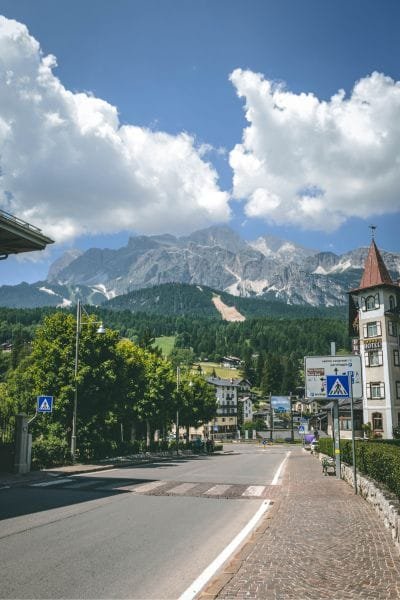
Milan approaches from northern European cities utilize excellent autostrada connections via A4 from Switzerland/Austria, A1 from France, or A22 from the Brenner Pass, though Olympic traffic will create unprecedented congestion on these normally efficient routes.
The A4 Milano-Venezia autostrada typically handles heavy commercial traffic, but Olympic period volumes will likely create delays even outside Milan’s notorious rush hours. I always use A4 for business trips in Milan, and even normal traffic can add an hour to expected travel times.
Cortina d’Ampezzo access requires mountain driving via SS51 from Belluno or scenic but challenging passes from Austria. The primary route from Venice through Belluno normally takes 1h 14m (108 km), but Olympic traffic could easily double this time.
Alternative Cortina routes through Austria via Innsbruck and the Brenner Pass offer spectacular Alpine scenery but add distance and border crossing complexity. However, these routes might provide relief when Italian approaches become overwhelmed.
Valtellina valley access via SS38 from Sondrio provides the only practical route to Nordic venues, creating natural jams that will require careful timing during Olympic events. The valley road offers no alternative routes when traffic problems develop.
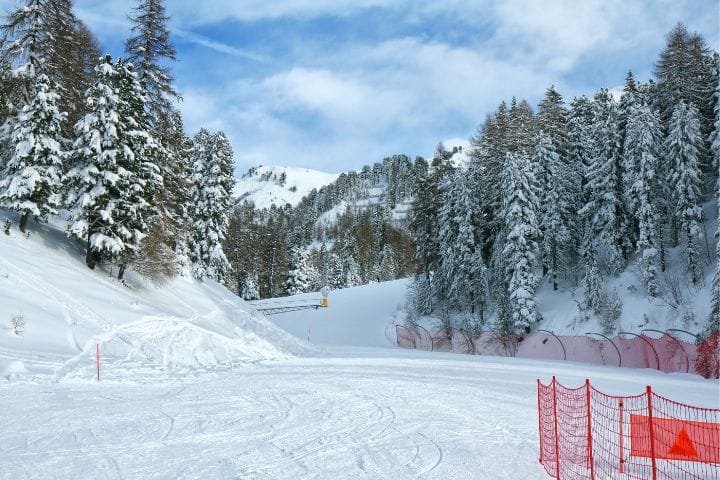
Val di Fiemme connections from other Olympic venues require navigating multiple mountain passes or valley routes that become particularly challenging during February weather conditions typical of Olympic timing.
Scenic route opportunities during Olympic travel include spectacular Dolomites passes, Alpine valley drives, and cultural stops that can transform necessary transportation into memorable tourism experiences.
Olympic driving route strategies:
- Milan: use multiple autostrada approaches but expect unusual delays
- Cortina: consider Austrian alternatives when Italian routes become overwhelmed
- Valtellina: single-access valley requires precise timing for event attendance
- Cross-venue travel: plan extended travel times for multi-location Olympic experiences
- Weather backup plans essential for February mountain driving conditions
🛣️ Driving Between Milan, Cortina & Alpine Sites
Highways + mountain roads require different strategies.
- Understand toll roads, alpine highways & Telepass → Italy Toll Roads & Telepass Explained
- Navigation tools that handle traffic & weather → Best Navigation Apps for Italy Road Trips
Parking Strategies for Olympic Venues
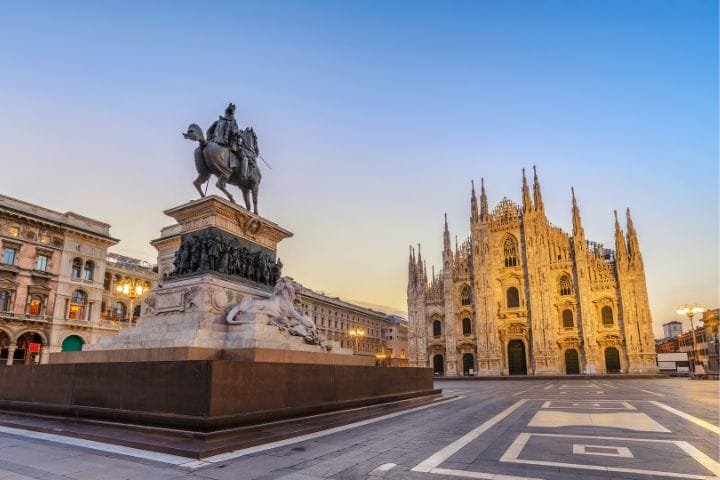
Milan Olympic venue parking presents the most complex challenges due to ZTL (Zona Traffico Limitato) restrictions that prohibit unauthorized vehicles in the city center areas where several venues are located. Understanding these restrictions becomes crucial to avoid substantial fines.
San Siro Stadium parking for the Olympic ceremonies will be extremely limited, with most spectators requiring alternative solutions. Having attended numerous matches here, I know that even regular events create parking nightmares – Olympic crowds will require comprehensive advance planning.
PalaItalia and Mediolanum Forum have limited on-site parking that will likely be reserved for VIPs and officials during Olympic events. Public parking alternatives require understanding Milan’s complex urban transportation network and advanced reservation systems.
During major Milan events, I’ve learned to park at suburban metro stations and use public transport for final venue access – a strategy that will become essential during Olympic competition periods.
Cortina d’Ampezzo parking remains the Olympics’ most challenging logistics problem, with a mountain town of 6,000 residents expecting to host tens of thousands of daily Olympic visitors in venues with minimal parking infrastructure.
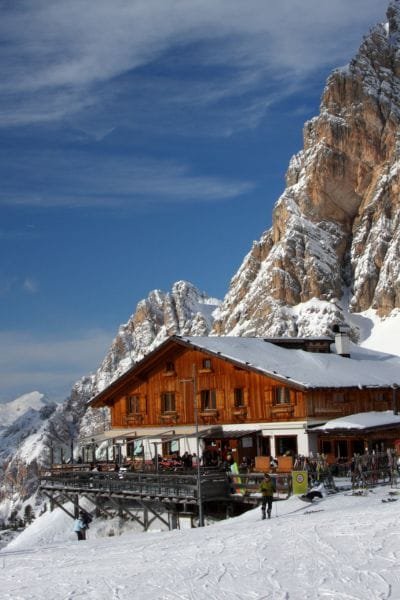
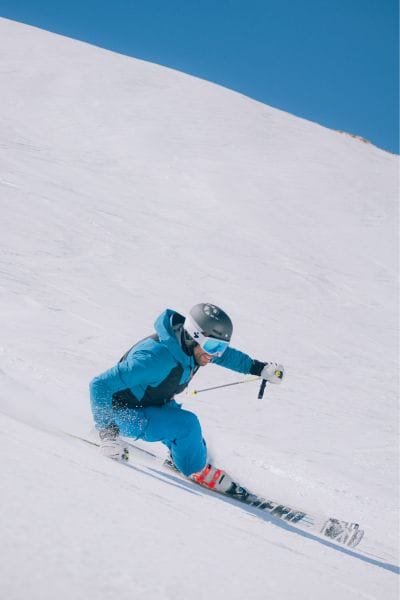
Olympic shuttle systems from satellite parking areas will likely operate from valley locations, requiring advance reservations and extended travel times that must be factored into event attendance planning.
Regional parking alternatives might include staying in nearby valleys like Val Pusteria or Val di Fassa, using these locations as Olympic bases with daily shuttle access to venues.
My experience during Cortina’s major skiing events has taught me that successful parking requires arriving at least 3-4 hours before events, treating parking location as a critical element of Olympic planning rather than an afterthought.
Advance reservation systems for Olympic parking will likely operate through official channels, requiring early registration and significant advance payment for guaranteed spaces near venues.
Parking strategy recommendations:
- Milan: suburban park-and-ride essential for ZTL-restricted venue access
- Cortina: expect satellite parking with shuttle services from valley locations
- Advance reservations critical for any guaranteed parking near Olympic venues
- Alternative accommodation locations might provide better parking access
- Budget significant time and money for Olympic period parking challenges
🅿️ Parking During Peak Olympic Periods
Expect restrictions, park-and-ride systems, and ZTL enforcement.
- Milan parking rules & restricted zones → Where to Park in Milan When Arriving by Car
- Understanding ZTL zones nationwide → Italy ZTL Zones Driving Guide
Accommodation Planning for Olympic Road Trips
Milan hotel availability during the Olympic periods will be extremely limited and expensive, with most properties likely requiring minimum stays and advance payment. Corporate rates that I normally access for business trips will be suspended during the Olympic weeks.
Secure parking hotels in Milan become premium commodities during major events, with properties offering parking typically charging substantial supplements. Hotels near Olympic venues will be impossible to book without very early advance reservations.
Cortina d’Ampezzo accommodation presents the Olympics’ most challenging booking situation, with limited mountain town capacity facing exceptional demand from international visitors seeking Alpine venue access.
During my decades of visiting Cortina d’Ampezzo, I’ve seen how even normal ski season crowds fill accommodation months in advance – Olympic demand will require booking immediately upon availability, likely 8-12 months prior to the Games.
Regional accommodation alternatives in valleys surrounding Olympic venues might provide better availability and parking while maintaining reasonable access to competition sites via shuttle systems or longer drives.
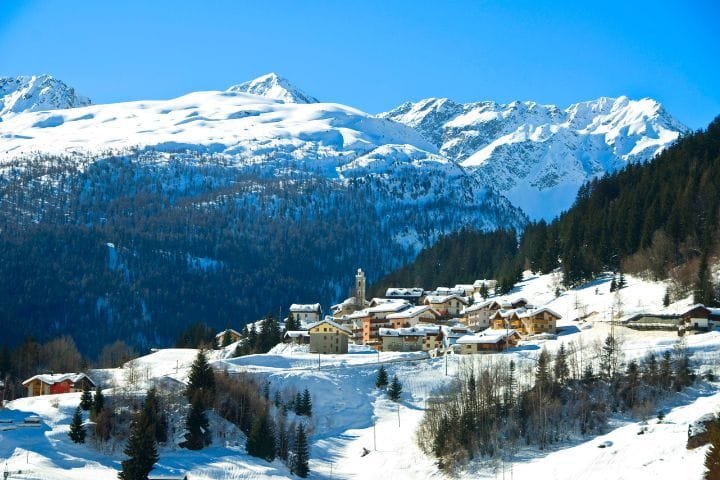
Agriturismo and rural options throughout northern Italy could offer authentic experiences with guaranteed parking while serving as bases for Olympic attendance, combined with cultural exploration of Italy’s remarkable rural heritage.
Multi-location strategies might involve different accommodation bases for different Olympic venue clusters, requiring flexible booking and comprehensive advance planning for transportation between regions.
Booking timeline recommendations suggest securing accommodation immediately upon Olympic ticket confirmation, understanding that cancellation policies will likely be strict and advance payments substantial.
Accommodation planning essentials:
- Milan: book immediately with secured parking as an absolute priority
- Cortina: extremely limited availability requiring 8-12 months advance booking
- Regional valleys might provide better availability with shuttle venue access
- Agriturismo alternatives offer guaranteed parking and authentic Italian experiences
- Multi-location accommodation strategies for different Olympic venue clusters
🏨 Choosing Hotels with Car Access
Parking and location matter more than proximity.
- Road-trip friendly luxury stays → Best Luxury Hotels for Italy Road Trips
- Alpine hotel access in winter → Best Cortina d’Ampezzo Hotels
Plan Your Trip with Our Favorite Booking Tools
Where to Stay in Milan for the Olympics
Milan city hotels with parking become absolute necessities during Olympic periods, with secure parking facilities representing premium amenities that will command substantial supplements during the Games. Having stayed at dozens of Milan hotels over my 20 years in Italy, I’ve learned that parking availability often determines accommodation selection more than room quality or location.

Luxury hotels with comprehensive parking, offer valet services and secure garage facilities:
Business hotels with reliable parking provide practical amenities for Olympic visitors, with underground parking and efficient venue access that balances comfort with logistics during high-demand periods.
During major Milan trade shows, I’ve experienced how quickly hotel parking fills, even at premium properties – Olympic demand will require booking parking separately and confirming availability multiple times before travel.
Mid-range options with parking solutions that offer decent parking facilities at more manageable rates, though availability during Olympic periods will be extremely limited.
Suburban hotels with guaranteed parking might provide the best value during the Olympics, with properties like:
Airport hotel strategies could eliminate city center parking challenges while providing reliable accommodation and transport links, though travel times to venues will be extended during Olympic traffic conditions.
My recommendation for Olympic accommodation booking involves securing properties with confirmed parking allocations immediately upon Olympic ticket confirmation, as parking availability will likely disappear faster than room availability.
Hotels.com booking advantages include flexible cancellation policies that might accommodate Olympic travel uncertainties, plus member rates that could provide savings during premium pricing periods.
Milan accommodation essentials:
- Book immediately with parking confirmation as absolute priority
- Luxury properties offer the best parking, but at premium Olympic pricing
- Suburban locations might provide better parking availability and value
- Airport hotels eliminate city center parking challenges
- Hotels.com flexible policies are beneficial for Olympic travel uncertainties
Where to Stay in Cortina d’Ampezzo
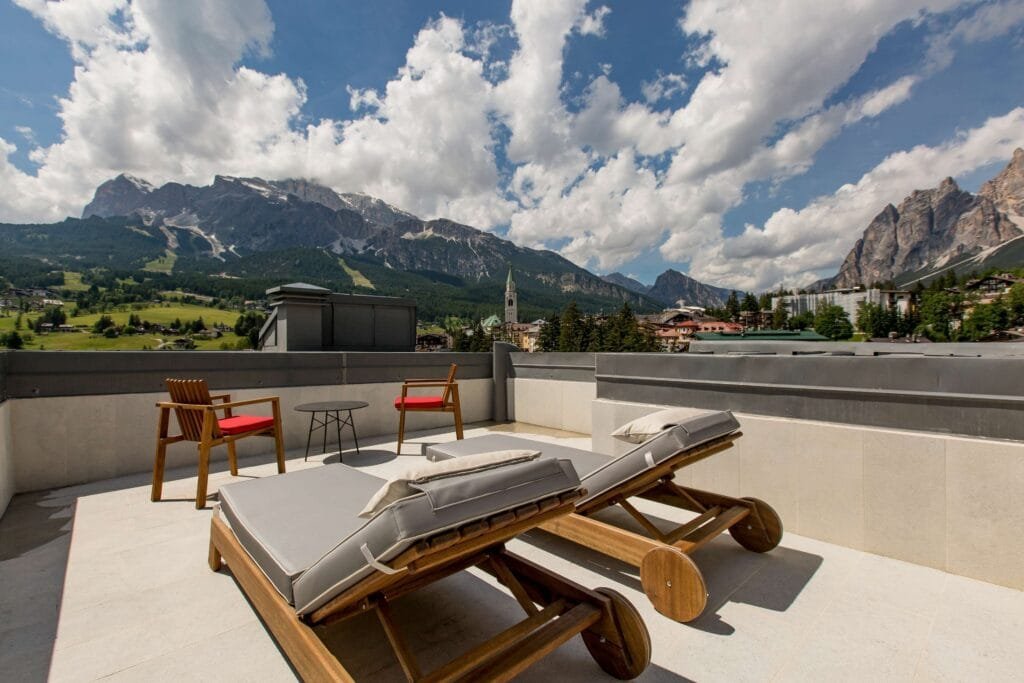
Cortina ski hotels and luxury resorts represent the ultimate Olympic accommodation experience, with properties like:
Providing legendary Alpine hospitality in spectacular Dolomites settings, though Olympic availability will be virtually impossible without very early booking.
Traditional mountain chalets offer authentic Alpine experiences with parking facilities designed for ski tourism, though capacity limitations mean these properties will likely be reserved for Olympic officials, media, or premium ticket holders during competition periods.
My experience staying at various Cortina properties during major skiing events has taught me that even world-class hotels struggle with parking during peak periods.
Spa resorts in the Dolomites combine Olympic venue access with relaxation amenities that provide perfect recovery from Olympic excitement and mountain driving challenges:
Family-run Alpine hotels offer authentic mountain hospitality with parking facilities, though Olympic booking will require immediate action upon availability and likely substantial advance payments.
Cortina accommodation priorities:
- Book immediately upon Olympic ticket confirmation with parking verification
- Traditional Alpine properties offer authentic experiences, but extremely limited availability
- Spa resorts provide relaxation amenities, balancing Olympic excitement
- Location and parking access are more important than luxury amenities during the Olympics
🏔️ Alpine Base for Olympic Events
Cortina will be a central Olympic hub.
- Full hotel guide for road-trippers → Best Cortina d’Ampezzo Hotels
- Nearby ski venues & winter routes → Best Dolomites Ski Resorts for a Winter Road Trip
Mid-Route Stays: Alpine Villages and Agriturismos
Alpine villages between Olympic venues provide authentic mountain culture experiences while serving as strategic bases for accessing multiple venue clusters without the extreme accommodation challenges of primary Olympic cities.
Val di Fassa traditional accommodations like family-run hotels in Canazei or Moena offer excellent parking, mountain culture, and reasonable access to both Cortina and Val di Fiemme Olympic venues while maintaining authentic Alpine character.
Val Pusteria accommodations in towns like Brunico or San Candido provide excellent highway access, authentic South Tyrolean culture, and potential alternatives when Cortina becomes completely booked during Olympic periods.
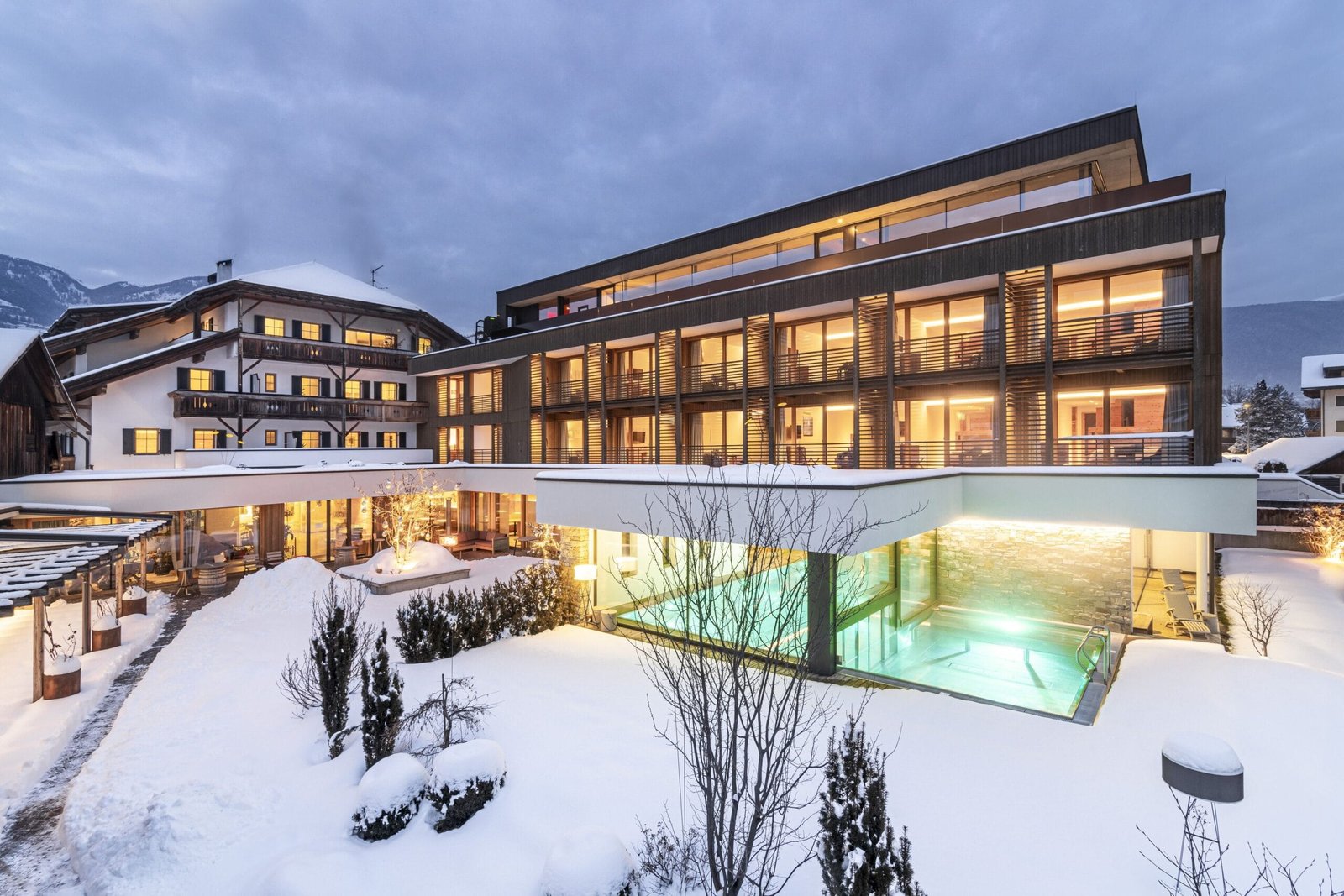
Valtellina valley agriturismos near Nordic Olympic venues provide authentic mountain agriculture experiences, excellent parking facilities, and cultural immersion that transforms Olympic attendance into a comprehensive Italian cultural exploration.
South Tyrolean mountain villages offer unique German-Italian cultural experiences with traditional accommodations, reliable parking, and potential Olympic venue access while showcasing authentic Alpine heritage.
Mid-route accommodation benefits:
- Alpine villages provide authentic culture while serving as strategic Olympic venue bases
- Agriturismo properties offer guaranteed parking and peaceful retreats from Olympic crowds
- Valley locations might provide better availability when primary Olympic cities fill completely
- Traditional mountain villages showcase authentic Italian Alpine heritage
Traffic Management and Olympic Period Logistics
Expected traffic volumes during Olympic periods will exceed anything northern Italy has experienced, with international visitors converging on infrastructure designed for normal regional capacity rather than global event attendance.
Olympic lane restrictions will likely reserve highway and urban lanes for official Olympic traffic, reducing capacity for the general public while creating enforcement complexity that could affect normal driving patterns throughout the region.
Having experienced similar restrictions during major Italian events, I know that Olympic lanes create psychological blockages even when traffic volumes might not technically justify delays – drivers become more cautious and traffic flow suffers accordingly.
Alternative route planning becomes essential when primary routes reach capacity, requiring comprehensive knowledge of secondary mountain roads, valley alternatives, and border crossings that might provide relief from overwhelmed main arteries.
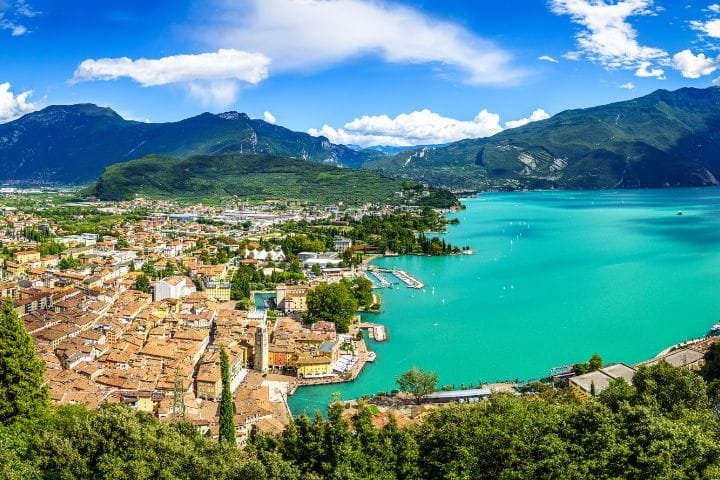
Real-time traffic monitoring through Italian apps like Infoblu and international navigation systems will be crucial for Olympic period driving, though these systems may struggle with unprecedented traffic patterns and Olympic-specific restrictions.
Peak competition period management will likely require avoiding driving during certain hours entirely, with some venues potentially accessible only via shuttle systems during the most popular events.
During major skiing events in Cortina, I’ve learned that driving becomes nearly impossible during peak hours, with successful venue access requiring departure at dawn or accepting very long delays during popular competition periods.
Emergency route alternatives should include backup plans for accessing venues when primary routes become impassable, potentially including train connections, shuttle systems, or alternative accommodation locations.
Traffic management strategies:
- Expect traffic volumes exceeding anything previously experienced in northern Italy
- Olympic lane restrictions will reduce public road capacity throughout the region
- Alternative mountain routes are essential when primary arteries reach capacity
- Real-time monitoring is crucial, but may struggle with unprecedented Olympic traffic patterns
- Peak event periods might require avoiding driving entirely in favor of shuttle systems
🚦 Expect Delays, Controls & Reroutes
Major events trigger temporary traffic regulations.
- Speed limits and enforcement during peak periods → Speed Limits in Italy for Tourists
- Understanding temporary signage & restrictions → Italian Road Signs Explained
Documentation and Legal Requirements
International driving permits will be essential for non-EU visitors, with Italian authorities likely implementing strict enforcement during high-profile Olympic periods when international attention focuses on the country’s infrastructure and services.
Olympic accreditation systems for vehicles might provide priority access or special permissions for certain parking areas, though these will likely be limited to media, officials, and premium ticket holders rather than general public access.
Enhanced insurance coverage becomes crucial during Olympic periods when accident risks increase due to unfamiliar drivers, congested conditions, and complex urban navigation in challenging mountain environments.
Having dealt with insurance claims in Italy over my 20 years of residence, I know that comprehensive coverage becomes essential when driving conditions exceed normal parameters – Olympic traffic will create unprecedented risks for vehicle damage and liability exposure.
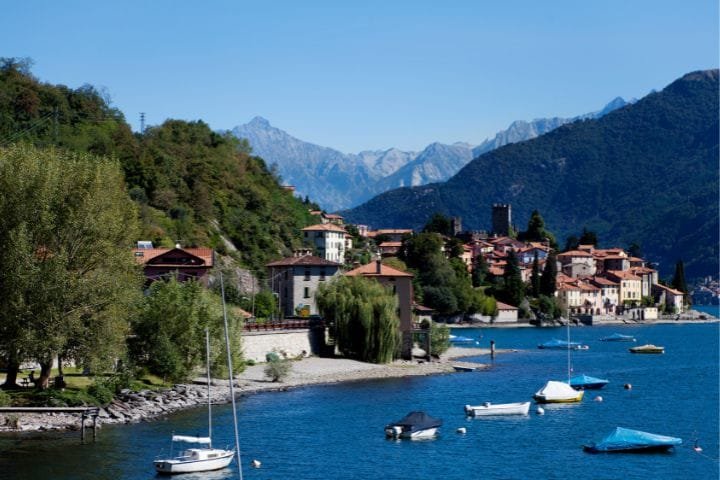
Border crossing efficiency for international visitors will be crucial when Olympic traffic creates delays at normal crossing points, requiring proper documentation and understanding of priority systems that might be implemented.
Vehicle registration requirements might include special permits for accessing certain Olympic venue areas, with advance registration potentially required for parking reservations and shuttle system access.
Emergency assistance coverage should include comprehensive roadside support that functions effectively during Olympic periods when normal service providers might be overwhelmed by unfamiliar demand.
Documentation requirements:
- International driving permits are essential for non-EU visitors during Olympic enforcement
- Comprehensive insurance coverage is crucial for Olympic period driving risks
- Vehicle registration might be required for certain Olympic venue access areas
- Border documentation is important for international visitors during peak traffic periods
- Emergency assistance coverage should account for the Olympic period service demand
📄 What You Must Carry
Checks increase during international events.
- IDP rules for foreign drivers → International Driving Permit Italy: Complete Guide
- Insurance requirements & accident procedures → Car Insurance Requirements in Italy
Seasonal Driving Conditions and Weather Planning
February Alpine weather presents significant challenges for Olympic period driving, with mountain passes potentially affected by snow, ice, and visibility conditions that can close routes or require specialized equipment.
Winter equipment requirements, including snow chains, will be mandatory for mountain venue access, with Italian authorities likely implementing strict enforcement during Olympic periods when international safety standards receive global attention.
My experience with February driving in the Dolomites has taught me that weather conditions can change dramatically within hours, transforming clear mountain roads into dangerous ice sheets that require immediate equipment deployment and modified driving techniques.
Weather monitoring systems become crucial for Olympic venue access planning, with mountain weather services providing detailed forecasts that should influence departure timing and route selection for venue attendance.
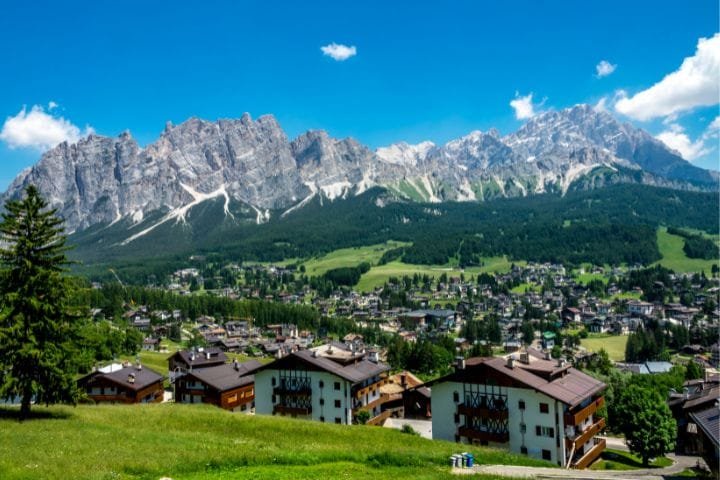
Backup transportation plans for weather-related access problems should include train connections, shuttle services, and flexible accommodation that allows venue access when driving becomes impossible due to Alpine conditions.
Olympic venue accessibility during adverse weather will likely prioritize shuttle systems over private vehicle access, requiring advanced understanding of alternative transportation that functions when mountain driving becomes impractical.
Road closure contingencies for major Alpine passes might affect access between Olympic venue clusters, requiring flexible itinerary planning and comprehensive backup routes for multi-venue Olympic attendance.
During severe weather events in the Alps, I’ve learned that official road closures often lag behind actual dangerous conditions – personal weather assessment and conservative decision-making become essential for safe mountain driving.
Weather planning essentials:
- February Alpine conditions require comprehensive winter driving preparation
- Mountain weather monitoring crucial for Olympic venue access planning
- Weather-related backup transportation plans are essential for venue attendance
- Road closure contingencies affect travel between different Olympic venue clusters
- Conservative weather decision-making is essential for safe Alpine driving during the Olympics
❄️ Olympic-Season Driving Realities
Snow, ice, and closures are common.
- Full winter driving safety playbook → Winter Driving in Italy: Complete Guide
- Mountain-specific techniques → How to Drive Italian Mountain Passes in Winter
Cost Planning and Budget Considerations
Fuel costs during Olympic periods will likely include premium pricing due to increased demand, with strategic fueling at less congested locations potentially providing savings over venue-area stations that will face high demand.
Parking fees near Olympic venues will reach premium levels, with advance-paid reservations potentially costing hundreds of euros for prime locations during popular events. Budget planning should include parking as a major expense category.
Having paid premium parking rates during major Milan events, I know that Olympic venue parking will likely cost more than accommodation in many cases – realistic budgeting requires treating parking as a luxury service rather than a standard expense.
Accommodation cost escalation during Olympic weeks will likely triple or quadruple normal rates, with minimum stay requirements and advance payment demands creating substantial upfront financial commitments.
Transportation expenses for multi-venue Olympic attendance include tolls, fuel, and potential shuttle services that can accumulate significantly when accessing venues across northern Italy’s diverse geographic regions.
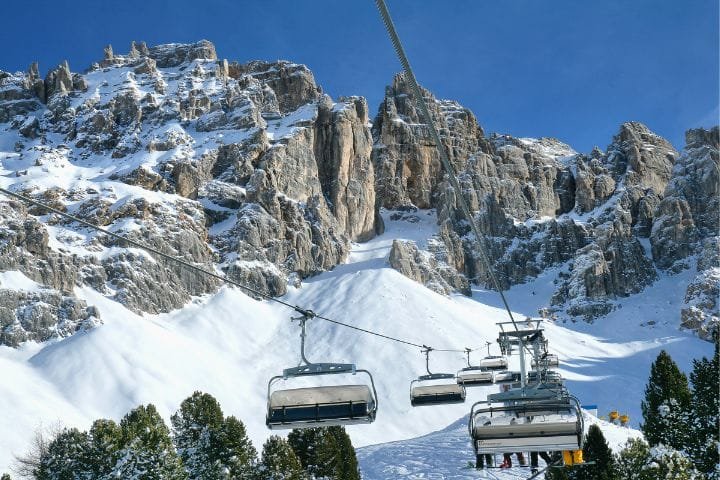
Money-saving strategies might include accommodation in less popular areas, shared parking arrangements, and combination transportation approaches that balance driving with public systems for optimal cost management.
Alternative cost structures like vacation rental properties with parking might provide better value than hotels for extended Olympic stays, particularly for groups sharing accommodation and transportation costs.
Budget planning recommendations:
- Fuel costs and parking will reach premium levels requiring substantial budget allocation
- Accommodation pricing will likely triple normal rates with advance payment requirements
- Multi-venue attendance creates significant transportation expense accumulation
- Shared accommodation and parking arrangements provide cost-saving opportunities
- Alternative lodging, like vacation rentals, might offer better value for groups
💸 Olympic Pricing & Road Trip Costs
Fuel, tolls, rentals, and parking add up quickly.
- Toll road pricing & payment → Italy Toll Roads & Telepass Explained
- Fuel cost strategies → Fuel Prices and Gas Stations in Italy
Renting a Car for the Olympics
Best airports for rental car pick-up vary significantly in their convenience for Olympic venue access, with strategic selection affecting your entire Olympic experience from the moment you land in Italy.
Milan Malpensa Airport (MXP) offers the largest selection of rental companies and vehicle types, with excellent highway connections to both Milan Olympic venues and mountain destinations. Having helped friends pick up rental cars here dozens of times over the years, I know that Malpensa provides the most reliable service and vehicle availability, though Olympic demand will strain even this major hub.
Milan Linate Airport (LIN) provides closer proximity to Milan city venues but significantly limited rental car availability and more complex urban driving immediately upon departure. The smaller airport means fewer rental options but potentially quicker processing during Olympic periods.
Venice Marco Polo Airport (VCE) serves as an excellent alternative for Cortina-focused Olympic visits, with scenic drives through the Veneto region and potentially better vehicle availability when Milan airports become overwhelmed during Olympic periods.
My experience during major Italian events has shown that secondary airports often provide better rental car availability and less stressful departure experiences when primary hubs become overwhelmed by event traffic.
Winter rental considerations require understanding Italian rental company policies regarding winter equipment, mountain driving permissions, and insurance coverage that becomes crucial during February Olympic conditions.
Insurance requirements for Olympic period driving should include comprehensive collision coverage, theft protection, and roadside assistance that functions effectively during high-demand periods when normal service providers might be overwhelmed.
During winter mountain driving with rental cars, I’ve learned that basic rental insurance rarely covers chain damage, winter weather incidents, or extended delays due to weather – comprehensive coverage becomes essential for Olympic mountain venue access.
Tire type specifications for Olympic winter driving require confirming winter tire availability with rental companies, as standard all-season tires prove inadequate for mountain venue access during February Alpine conditions.
4WD and AWD availability becomes crucial for reliable Olympic venue access, particularly for Cortina mountain locations where winter driving conditions will challenge even experienced drivers with proper equipment.
Rental car Olympic strategies should include booking immediately upon Olympic ticket confirmation, upgrading to larger rental companies with better support networks, and confirming winter equipment availability multiple times before travel.
Early booking advantages for Olympic rental cars include guaranteed vehicle availability, winter equipment confirmation, and potentially better rates before Olympic demand drives prices to premium levels.
My recommendation involves booking with major international rental companies that maintain larger fleets and better emergency support networks – during Olympic periods, reliability becomes more important than price considerations.
Olympic rental car essentials:
- Malpensa offers the best availability and highway access to all Olympic venues
- Venice airport provides alternative access focused on Cortina d’Ampezzo mountain venues
- Comprehensive insurance coverage is essential for Olympic-period winter mountain driving
- Winter tire and 4WD confirmation crucial for reliable mountain venue access
- Book immediately upon Olympic planning with major rental companies for reliability
- Use comparison sites like DiscoverCars to get the best car rental deals
🚗 Choosing the Right Rental During Peak Demand
Availability will be limited — book smart.
- Best rental companies for foreigners → Best Car Rental Companies in Italy for Foreigners
- Manual vs automatic considerations → Manual vs Automatic in Italy
Combining the Olympics with Italian Tourism
Cultural attractions accessible from Olympic bases include Milan’s Renaissance treasures, Verona’s Roman heritage, and countless Alpine valleys preserving traditional mountain culture that enhances Olympic experiences with authentic Italian discovery.
Wine regions near Olympic venues include Valtellina’s mountain viticulture, Trentino’s innovative producers, and Veneto’s prestigious appellations that provide perfect non-competition day experiences combining Olympic excitement with Italian excellence.
Historic towns like Bergamo, Trento, and Bolzano offer authentic Italian urban experiences with excellent cuisine, traditional architecture, and cultural sites that showcase northern Italy’s remarkable diversity beyond Olympic competition.
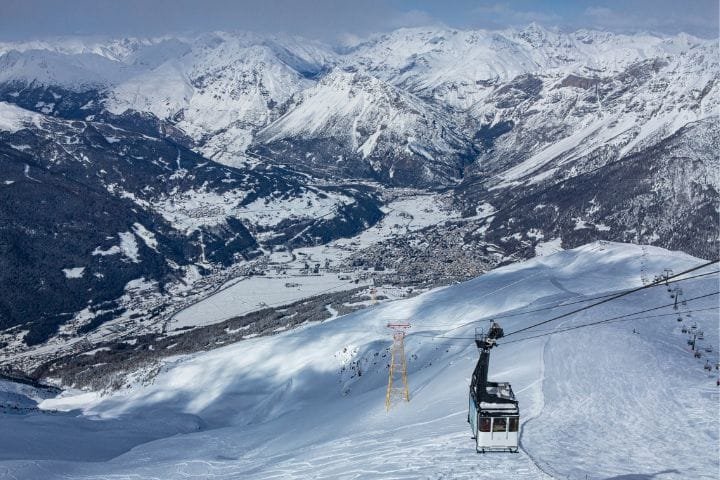
Alpine attractions throughout the Dolomites provide spectacular hiking, scenic drives, and traditional mountain culture that can transform Olympic travel into a comprehensive northern Italian cultural immersion.
Photography opportunities combining Olympic atmosphere with Italian landscapes create unique documentation possibilities, from dramatic Alpine venues to traditional Italian mountain communities hosting global athletic competition.
Extended road trip possibilities before or after Olympic attendance could include comprehensive northern Italian exploration, crossing into neighboring Alpine countries, or combining Olympic experiences with broader European travel adventures.
Cultural combination opportunities:
- Renaissance art and architecture accessible from Milan Olympic base
- Wine regions near Olympic venues providing authentic Italian cultural experiences
- Historic Alpine towns offering traditional culture and excellent cuisine
- Dolomites attractions combining Olympic attendance with spectacular natural beauty
- Extended road trip possibilities for comprehensive northern Italian exploration
Alternative Transportation and Backup Plans
Train connections to Olympic venues provide reliable alternatives when driving becomes impractical, with Italy’s excellent rail network offering access to most venue areas through connections that avoid Olympic traffic complications.
Organized Olympic tour packages might provide professional transportation with reserved parking, local knowledge, and comprehensive logistics that individual drivers cannot match during unprecedented crowd conditions.
Park-and-ride systems from locations outside Olympic traffic zones could provide the best compromise between driving flexibility and venue access efficiency, combining personal transportation with organized shuttle services for final venue approach.
Having used park-and-ride systems during major Italian events, I’ve found these hybrid approaches often provide better overall experiences than attempting to drive directly to venues during peak demand periods.
Car-free accommodation strategies in cities with excellent public transportation might eliminate driving stress while providing authentic Italian urban experiences and reliable Olympic venue access through established transit systems.
Flexible transportation planning that combines driving with alternative methods allows adaptation to changing conditions, weather problems, and traffic situations that exceed original planning assumptions.
Regional shuttle networks might provide the most efficient Olympic venue access, with advance booking systems that guarantee transportation while eliminating individual parking and traffic navigation challenges.
Emergency transportation alternatives should include comprehensive backup plans for accessing venues when original driving plans become impossible due to traffic, weather, or other unforeseen complications.
Alternative transportation strategies:
- Train connections providing reliable Olympic venue access without driving complications
- Organized tour packages offering professional logistics and reserved parking
- Park-and-ride systems combining driving flexibility with efficient venue access
- Car-free accommodation in cities with excellent public transportation
- Flexible planning combining multiple transportation methods for optimal Olympic access
Your 2026 Olympic Adventure
Successfully navigating the 2026 Winter Olympics by car requires comprehensive advance planning that balances the excitement of Olympic attendance with realistic logistics for one of Europe’s most challenging transportation events in spectacular but geographically demanding Alpine locations.
My 20 years of Italian residence and extensive northern Italy driving experience have taught me that successful Olympic travel depends on understanding regional infrastructure limitations, weather challenges, and traffic patterns that will be magnified exponentially during global competition periods.
The combination of world-class athletic competition, stunning Italian mountain scenery, and rich cultural experiences creates unprecedented opportunities for travelers willing to master the complexities of Olympic period driving in northern Italy. The key lies in treating transportation as a strategic element of Olympic planning rather than an afterthought, understanding that venue access will often determine event attendance more than ticket availability.
The 2026 Milan-Cortina Olympics offer once-in-a-lifetime opportunities for those prepared to navigate their unique challenges successfully.
Buon Viaggio!
🏁 Final Olympic Road Trip Checklist
Flexibility, preparation, and local knowledge make the difference.
- Master Italian driving rules → The Ultimate Guide to Driving in Italy
- Rent confidently during peak season → How to Rent a Car in Italy Stress-Free
Winter Olympics Italy 2026: Travel FAQs
Where are the 2026 Winter Olympics being held in Italy?
The 2026 Winter Olympics will be hosted across multiple locations in Northern Italy, including Milan, Cortina d’Ampezzo, Bormio, Livigno, Val di Fiemme, and Predazzo. Events are split between city-based and alpine venues.
What’s the best way to travel between Olympic venues in Italy?
Driving by car offers the most flexibility, especially for visiting mountain venues like Cortina or Bormio. Public transport is available between major hubs, but access to remote areas may require shuttles or car travel.
Do I need to book hotels in advance for the 2026 Winter Olympics?
Yes — it’s highly recommended. Accommodations in Milan, Cortina, and nearby towns will book out fast, especially those with parking or close access to Olympic events. Book at least 6–8 months in advance if possible.
What’s the weather like in Italy during the Olympics?
Expect cold winter temperatures, especially in the mountains. Milan may be chilly and foggy, while Alpine towns like Cortina and Livigno will see heavy snow, ice, and sub-zero conditions — pack and plan accordingly.
Will there be road restrictions or traffic zones near Olympic venues?
Yes. Temporary ZTL zones, road closures, and shuttle-only areas will likely be in effect around Olympic venues — especially in Cortina. Travelers driving in should plan for park-and-ride options and monitor local travel alerts.
Can I drive directly to the Olympic venues in Cortina and Milan?
In most cases, you can drive near the venues but will need to park in designated areas and take shuttles. Expect road closures, temporary ZTL zones, and limited vehicle access around key Olympic sites, especially in Cortina d’Ampezzo.
Are snow chains or winter tires mandatory for driving to Cortina?
Yes. Winter tires or snow chains are legally required between November 15 and April 15 on most mountain routes in northern Italy. Police may check compliance near mountain passes and Olympic areas.
Is there parking available near Olympic venues?
Yes, but it will be limited and in high demand. Cortina will likely have park-and-ride systems or designated Olympic shuttle hubs. Milan offers large underground garages, but avoid restricted ZTL zones.
Can I rent a car during the 2026 Winter Olympics?
Yes, but book early—Olympic demand will be high. Choose vehicles with winter tires, and consider AWD or compact SUVs for mountain roads. Major rental hubs: Milan Malpensa, Linate, Venice Marco Polo, and Bolzano.
💬 We’d love to hear from you!
Have questions, tips, or personal travel stories to share? Drop them in the comments below — your insights help fellow travelers plan their adventures too.




